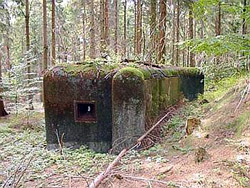
The fortresses were meant to protect Czechoslovakia, today they are museums and warehouses
 |
Today, there are over 7000 First Republic bunkers in the Czech Republic. Many of them now serve as museums, the newest of which will open to visitors after 70 years since completion: the artillery fortress Hůrka near Králíky in the Orlickoústecko region. Until this May, the Czech army used it only as an ammunition depot. Many other fortified structures also ended up being used as storage for various materials. Sometimes they were used by farmers, while in other cases, a structure originally intended for the defense of interwar Czechoslovakia found itself on private property where its owners used it for storing fruits and vegetables.
For history lovers, especially those interested in military history, the most fascinating bunkers are those that still remind of the period and purpose of their creation. The first two museums of Czechoslovak fortifications were established in the late 1960s in Eastern Bohemia. In the Orlické mountains, interested visitors could view the Hanička fortress, while near Náchod, they could see part of the unfinished Dobrošov artillery fortress. However, the former was only accessible to the public for six years; in 1975, it was closed, and the Ministry of the Interior built an underground facility there in case of war. Hanička was reopened only after 20 years.
 |
Many of them were not fully equipped and armed; usually only the light structures (the so-called "řopíky") were fully ready for use. The situation was worse for the artillery fortresses, where the most vital parts of armament, such as armored bells or cannons, were often missing. Moreover, much of the heavy armament was still on the drawing boards. This, however, is not unusual; the first phase of building the border fortifications was supposed to end only around 1941-1942, with the completion of the entire system planned for the early 1950s.
Much of what had already been embedded in the bunkers was used by the Germans during the war, who transported cannons and entire domes to the West, where they were employed in building fortifications in France or Norway. The German army destroyed part of the bunkers by flooding them with concrete, while on others, they tested the effectiveness of their weapons. However, most objects survived the war; a small portion was used by the Czechoslovak army, while others fell victim to the hunt for iron or building materials.
For many years, the bunkers belonged to the Ministry of Defense. The situation began to change only in recent years, when the army started to transfer the fortifications to individual interested parties, mostly municipalities. However, the transfers were complicated and made more expensive by the fact that the bunkers, due to secrecy, were not listed in the land registry at the time of construction.
The English translation is powered by AI tool. Switch to Czech to view the original text source.
1 comment
add comment
Subject
Author
Date
čs opevnění
Tomáš Berka
24.08.08 09:29
show all comments











